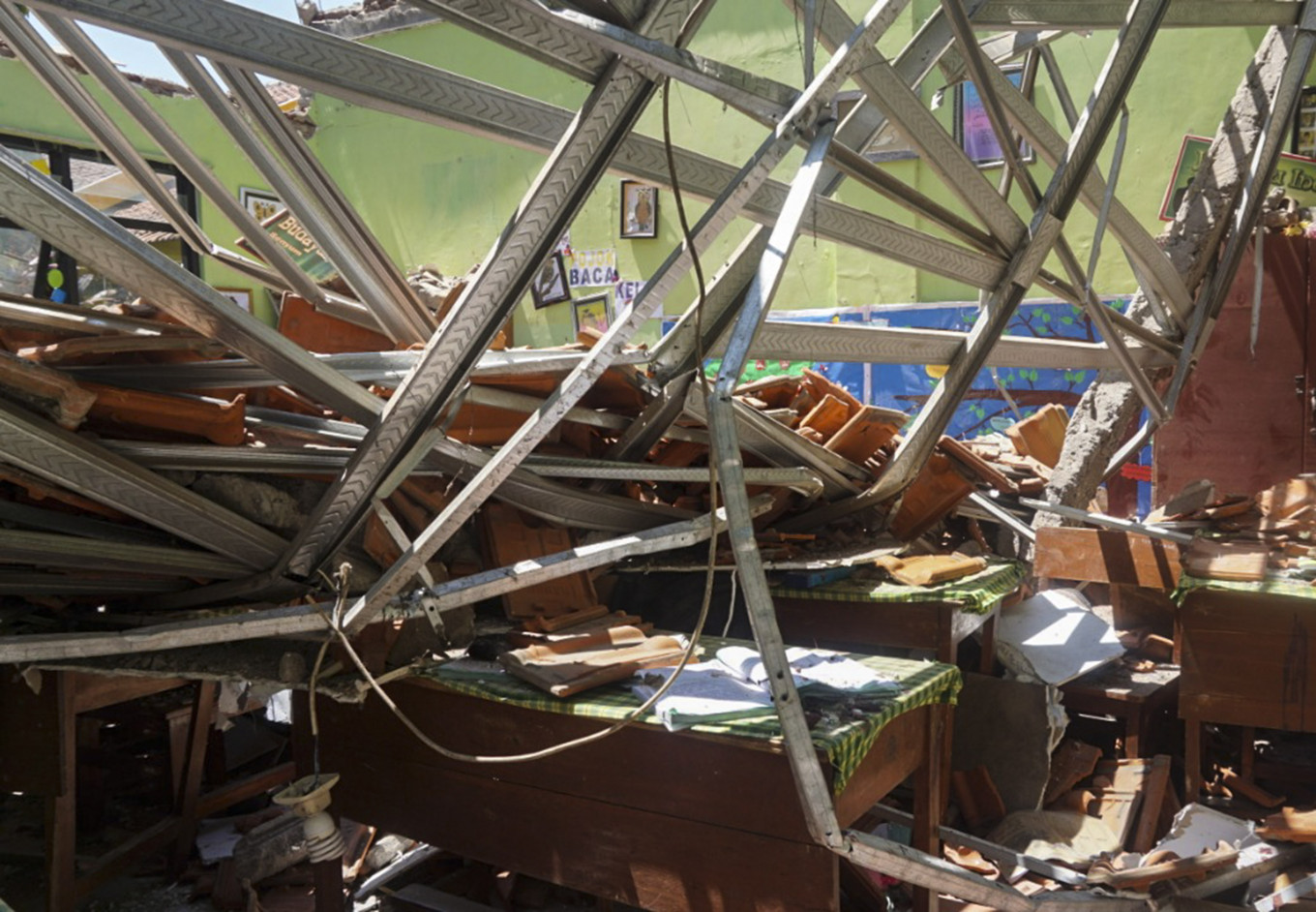Popular Reads
Top Results
Can't find what you're looking for?
View all search resultsPopular Reads
Top Results
Can't find what you're looking for?
View all search resultsPasuruan’s commitment to education questioned after falling roof kills student, teacher
The city administration allocated only about 6 percent of the regional budget (APBD) for education -- far below the national standard of 20 percent.
Change text size
Gift Premium Articles
to Anyone
S
chools are supposed to be the safest places for children after their own homes, but this was not the case for 8-year-old Irza Almira, who died on Tuesday morning after a school roof collapsed in Pasuruan, East Java.
The collapse at state elementary school SDN 1 Gentong also killed her teacher, Sevina Arsy Putri Wijaya, and injured 12 students aged 7 to 11.
The Pasuruan Police have not determined the cause of the incident. However, the city’s police chief Adj. Sr. Comr. Agus Sudaryatno suspected that the construction of the school in 2017 was "not up to standard".
The accident has raised questions about the city administration’s commitment to providing safe and convenient schools for children. It only allocated about 6 percent of the regional budget (APBD) for education – far below the national standard of 20 percent.
In a statement on Wednesday, the Indonesian Child Protection Commission (KPAI) criticized the administrations of Pasuruan and other regions for their lack of budgetary commitment to education.
The commission noted that Article 31 Paragraph 4 of the 1945 Constitution required the central government and regional administrations to devote at least 20 percent of their respective budgets for education.
According to KPAI, Pasuruan has the lowest budget for education in East Java with 27 school buildings in poor condition and in dire need of repair.
“Authorities at the central and regional levels should prioritize schools' rehabilitation. They should also improve the standards of the buildings,” KPAI commissioner Retno Listyarti said in the statement.
Retno said she planned to meet with officials from the Pasuruan administration to discuss the matter.
Nationwide, Pasuruan is not a special case. In 2016, there were 10 cities or regencies that only set aside 0.99 percent of their respective budgets for school construction and rehabilitation, according to research by the Civil Society Alliance for Democracy (YAPPIKA) and ActionAid.
With such low commitment, it is quite likely that similar incidents of falling school roofs or collapsing buildings will occur again, YAPPIKA program manager Hendrik Rosdinar said.
The YAPPIKA-ActionAid data shows that collapsing school buildings between 2015 and 2019 claimed the lives of four students and injured 73 others.
"The list could potentially grow [...] as more than six million children study in dilapidated classrooms that could collapse any time," Hendrik added.










